

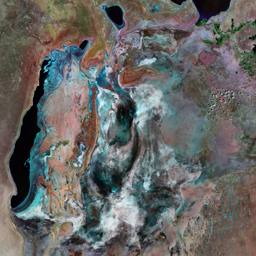

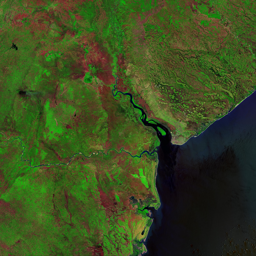


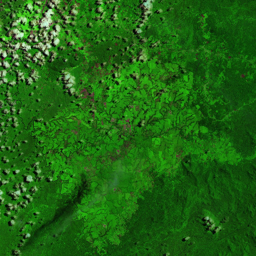

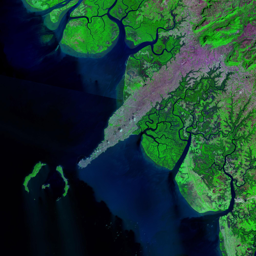
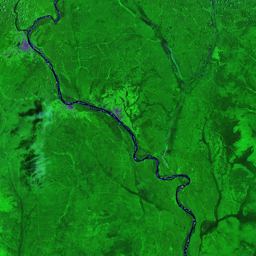
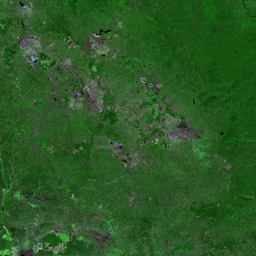
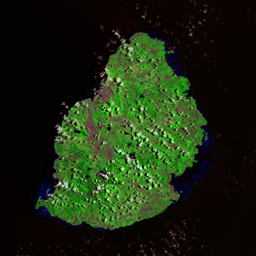
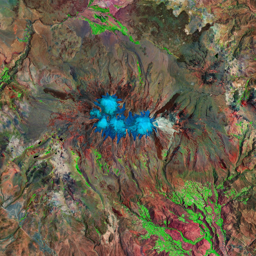


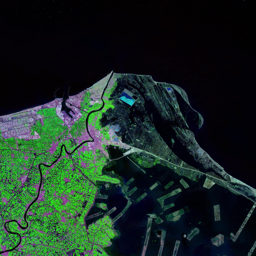
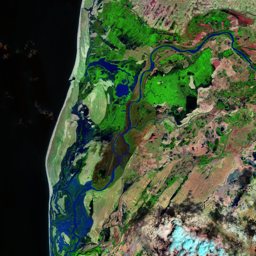


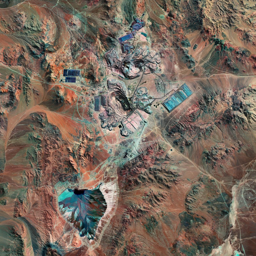
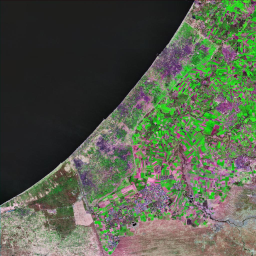



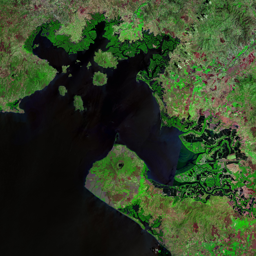

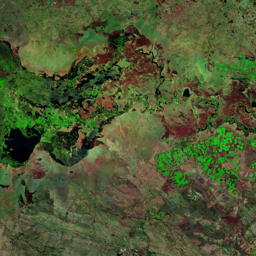
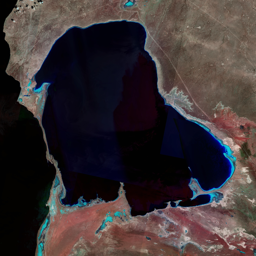
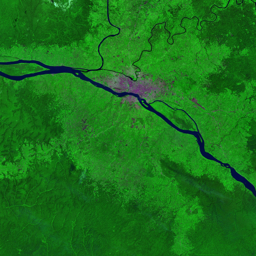


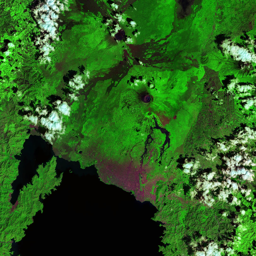

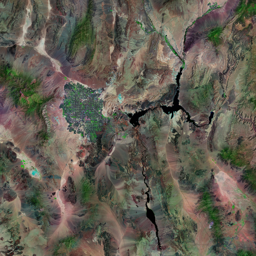
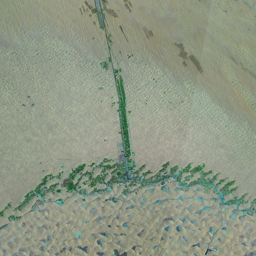
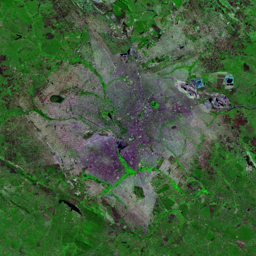
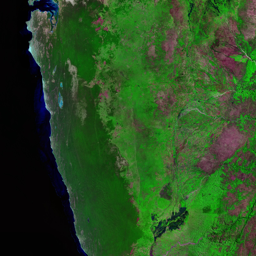


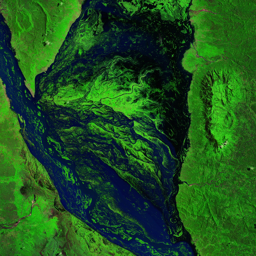







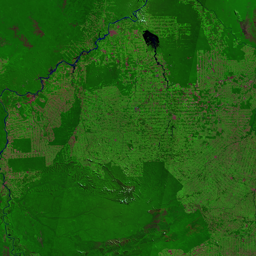
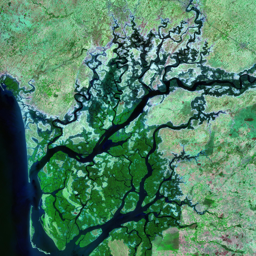
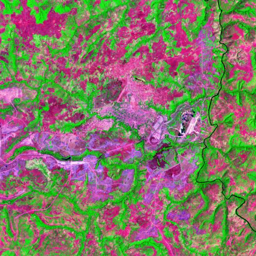
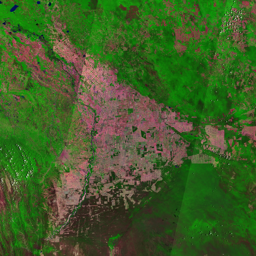
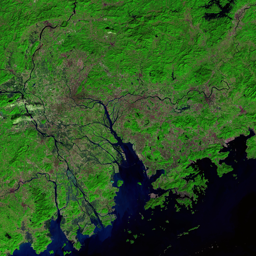

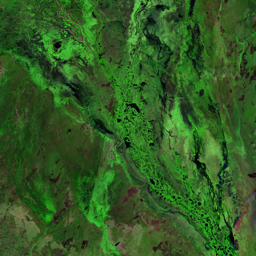



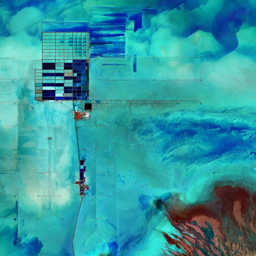
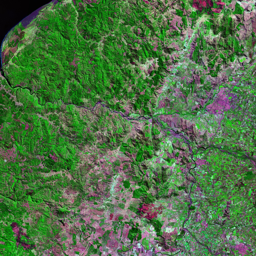

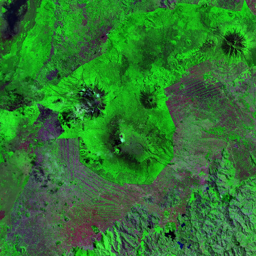
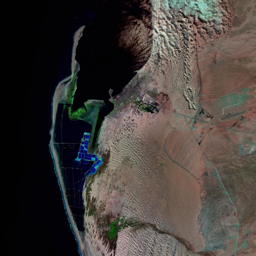

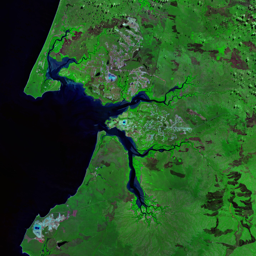
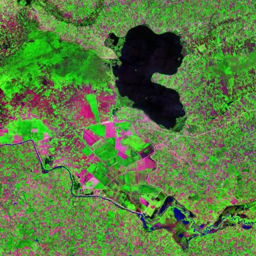
Shared by Kenya, Tanzania, and Uganda, Lake Victoria is the second largest freshwater lake in the world. The infestation of Lake Victoria by water hyacinth in the 1990s disrupted transportation and fishing, clogged water intake pipes for municipal water, and created habitat for disease-causing mosquitoes and other insects. This led to the initiation of the Lake Victoria Environmental Management Project in 1994. The focus of the Project was to combat hyacinth infestations on the lake, particularly the region bordered by Uganda, which was one of the most severely affected areas. The 1995 image shows several water-hyacinth-choked bays: large parts of Murchison and Gobero Bays Initially, water hyacinth was controlled by hand, with the plants being manually removed from the lake. But re-growth quickly occurred. A more recent control measure has been the careful introduction of natural insect predators of water hyacinth. other images show, this approach seems to have been successful, as the choking by floating weeds are not visible anymore. Even if concentrations of water hyacinth are still visible, they are less dense and concentrated and diseapear quickly like can be seen by comparing 2018 images taken with an interval of less than 2 months.
Use shift + scroll to zoom the map
Use shift + scroll to zoom the map